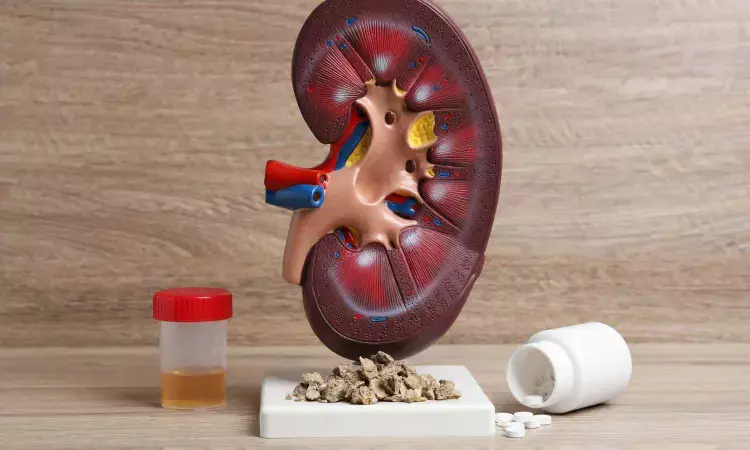- Home
- Medical news & Guidelines
- Anesthesiology
- Cardiology and CTVS
- Critical Care
- Dentistry
- Dermatology
- Diabetes and Endocrinology
- ENT
- Gastroenterology
- Medicine
- Nephrology
- Neurology
- Obstretics-Gynaecology
- Oncology
- Ophthalmology
- Orthopaedics
- Pediatrics-Neonatology
- Psychiatry
- Pulmonology
- Radiology
- Surgery
- Urology
- Laboratory Medicine
- Diet
- Nursing
- Paramedical
- Physiotherapy
- Health news
- Fact Check
- Bone Health Fact Check
- Brain Health Fact Check
- Cancer Related Fact Check
- Child Care Fact Check
- Dental and oral health fact check
- Diabetes and metabolic health fact check
- Diet and Nutrition Fact Check
- Eye and ENT Care Fact Check
- Fitness fact check
- Gut health fact check
- Heart health fact check
- Kidney health fact check
- Medical education fact check
- Men's health fact check
- Respiratory fact check
- Skin and hair care fact check
- Vaccine and Immunization fact check
- Women's health fact check
- AYUSH
- State News
- Andaman and Nicobar Islands
- Andhra Pradesh
- Arunachal Pradesh
- Assam
- Bihar
- Chandigarh
- Chattisgarh
- Dadra and Nagar Haveli
- Daman and Diu
- Delhi
- Goa
- Gujarat
- Haryana
- Himachal Pradesh
- Jammu & Kashmir
- Jharkhand
- Karnataka
- Kerala
- Ladakh
- Lakshadweep
- Madhya Pradesh
- Maharashtra
- Manipur
- Meghalaya
- Mizoram
- Nagaland
- Odisha
- Puducherry
- Punjab
- Rajasthan
- Sikkim
- Tamil Nadu
- Telangana
- Tripura
- Uttar Pradesh
- Uttrakhand
- West Bengal
- Medical Education
- Industry
Topiramate and Zonisamide Linked to Increased Risk of Symptomatic Kidney Stones, suggests study

A new study published in the American Journal of Kidney Diseases showed that Topiramate and zonisamide, which are often taken for obesity, epilepsy, and migraines, may increase the risk of kidney stones.
General practitioners are increasingly using topiramate and zonisamide, which were first created as antiseizure drugs, for various purposes including managing weight or preventing migraines. Although there is a paucity of empirical evidence supporting this link, topiramate and zonisamide may both contribute to kidney stone development by raising urine pH and lowering urine citrate. Thus, this study by Bassel Salka and colleagues investigated the association between kidney stone risk and the usage of topiramate and zonisamide.
Age- and sex-matched controls were chosen for this retrospective cohort study, which included Medicare enrollees and people in Optum's deidentified Clinformatics Data Mart Database (CDM) who had at least one prescription filled for topiramate or zonisamide between January 1, 2011, and September 30, 2019.
The exposure criteria were either new usage of zonisamide or topiramate. The main outcome was determined to be a symptomatic stone occurrence, which is defined as a visit to the emergency room, hospitalization, or kidney stone surgery. The primary analytical method was Cox proportional hazards regression.
During the trial period, 187,032 out of 1,122,301 patients completed prescriptions for either zonisamide or topiramate. In the CDM and Medicare cohorts, the unadjusted cumulative incidence of symptomatic stone occurrences between 3 months and 3 years following the first filled prescription was 2.9% and 2.0% among topiramate or zonisamide users, respectively, when compared to 1.2% and 1.3% among nonusers (P<0.001 for each comparison).
The users were much more likely than nonusers to experience a symptomatic stone incident after adjusting for covariates (CDM cohort: HR, 1.58 [95% CI, 1.49-1.68]; Medicare cohort: HR, 1.22 [95% CI, 1.11-1.34]). Younger adults taking either topiramate or zonisamide had a larger correlation with stone risk, and higher dosages of topiramate increased the likelihood of a symptomatic stone occurrence.
Overall, an elevated risk of symptomatic stone events was linked to the use of topiramate or zonisamide. Various results help weigh the advantages and disadvantages of various drugs. Potential bias in unmeasured variations among topiramate or zonisamide users and nonusers was the study's main weakness.
Reference:
Salka, B. R., Oerline, M. K., Yan, P., Hsi, R. S., Crivelli, J. J., Asplin, J. R., Shahinian, V. B., & Hollingsworth, J. M. (2025). Associations of topiramate and zonisamide use with kidney stones: A retrospective cohort study. American Journal of Kidney Diseases: The Official Journal of the National Kidney Foundation, 85(6), 687-694.e1. https://doi.org/10.1053/j.ajkd.2024.12.009
Neuroscience Masters graduate
Jacinthlyn Sylvia, a Neuroscience Master's graduate from Chennai has worked extensively in deciphering the neurobiology of cognition and motor control in aging. She also has spread-out exposure to Neurosurgery from her Bachelor’s. She is currently involved in active Neuro-Oncology research. She is an upcoming neuroscientist with a fiery passion for writing. Her news cover at Medical Dialogues feature recent discoveries and updates from the healthcare and biomedical research fields. She can be reached at editorial@medicaldialogues.in
Dr Kamal Kant Kohli-MBBS, DTCD- a chest specialist with more than 30 years of practice and a flair for writing clinical articles, Dr Kamal Kant Kohli joined Medical Dialogues as a Chief Editor of Medical News. Besides writing articles, as an editor, he proofreads and verifies all the medical content published on Medical Dialogues including those coming from journals, studies,medical conferences,guidelines etc. Email: drkohli@medicaldialogues.in. Contact no. 011-43720751


